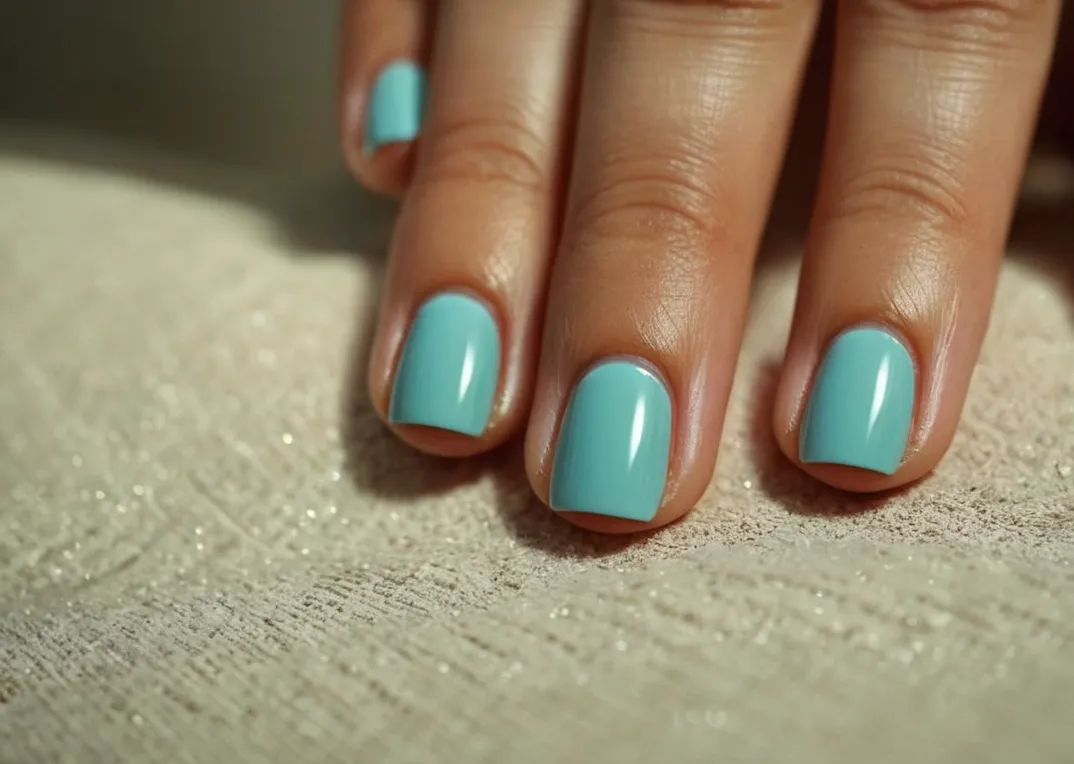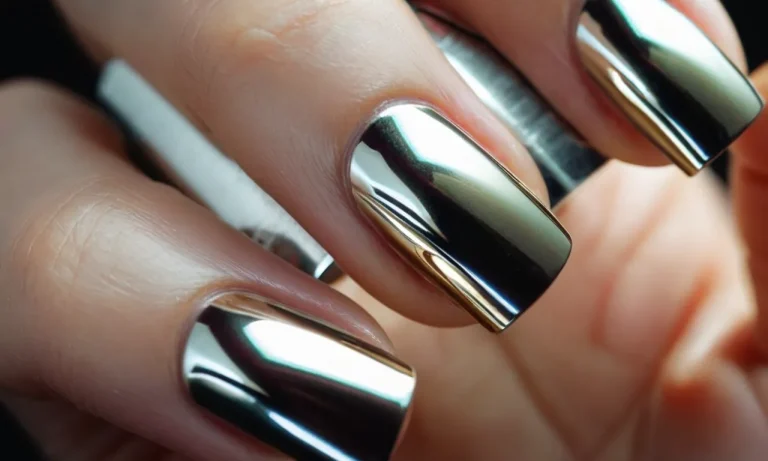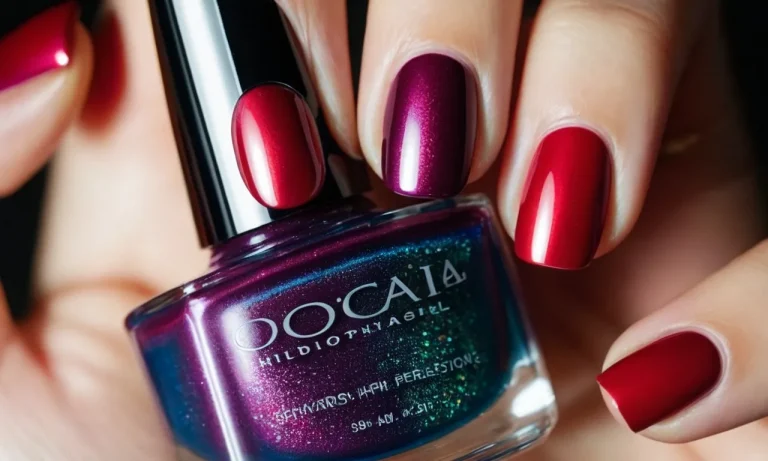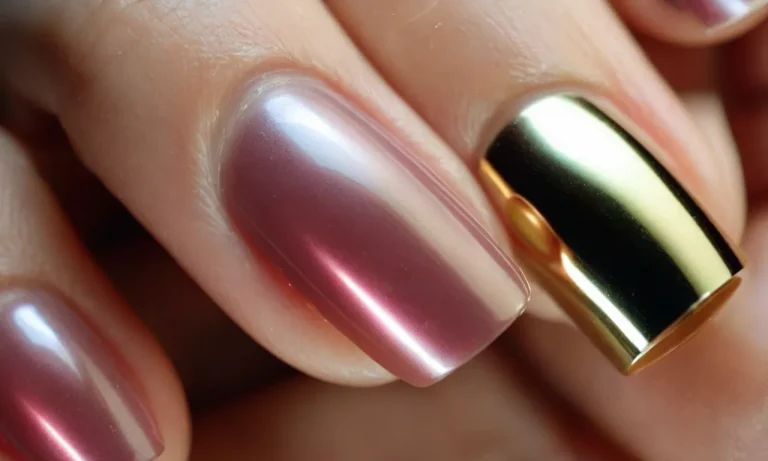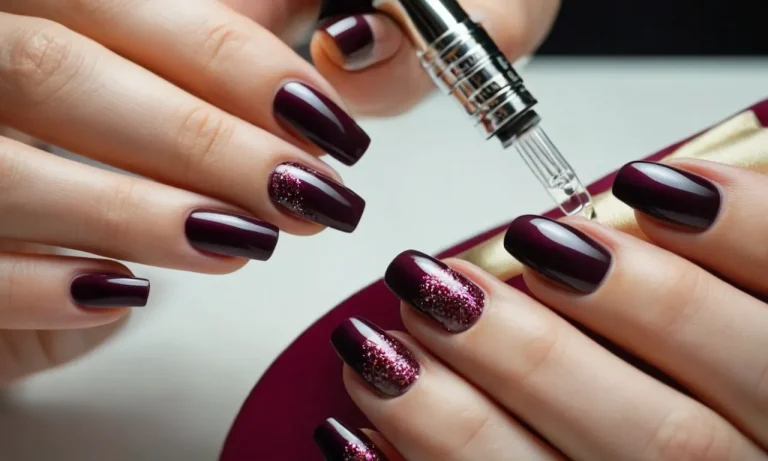How To Stop Nails From Curling Under
If you’ve ever experienced nails that curl under at the tips, you know how unsightly and uncomfortable it can be. Luckily, with the right products and techniques, you can get your nails growing straight in no time.
If you’re short on time, here’s a quick answer to your question: use nail hardeners, file nails straight across, avoid very short nail lengths, moisturize cuticles, and take biotin supplements. But keep reading below for more details on these methods as well as other useful tips for preventing curled nails.
In this comprehensive guide, we’ll cover why nails can curl under, how to fix bent nails using strengthening products and filing techniques, maintaining proper moisture, taking supplements for healthy nails, when to see a doctor, and much more.
With the right care regimen, you can get your nail tips to grow out straight again.
What Causes Nails to Curl Under?
Dryness and Brittleness
Dry, brittle nails are more likely to crack and peel back, causing them to curl under at the tips. Frequent exposure to water, harsh chemicals, and acetone can strip nails of moisture leading to brittleness.
An American Academy of Dermatology survey found that women who washed dishes by hand multiple times per day were more prone to brittle, cracked nails. Using moisturizers and gloves when washing dishes or cleaning can help prevent moisture loss.
Injury and Breakage
Injuries from bumps, snags, and consistent pressure can cause nails to crack, peel, and curl under. Breakage near the nail bed is especially problematic since it takes 4-6 months for fingernails and 6-12 months for toenails to fully regrow.
Using protective gear, being aware of hazards, and filing nails to smooth out snags can help prevent breaks leading to curling.
Fungal Infections
A fungal infection, also called onychomycosis, can cause nails to thicken, discolor, crumble, and detach from the nail bed – leading to curling under of the affected nails. An estimated 10% of adults in Western countries have fungal nail infections.
Risk factors include diabetes, old age, poor circulation, sweating, walking barefoot in damp areas, and wearing shoes that don’t breathe well. Seeing a podiatrist or dermatologist for an exam and possible antifungal medication can help treat the infection and allow new, healthy nails to grow in properly.
Using Nail Hardeners and Strengtheners
Types of Nail Hardeners
There are a few main types of nail hardeners and strengtheners that can help stop nails from curling under:
- Formaldehyde-based hardeners – These used to be very common but are now less popular due to health concerns around formaldehyde. They work by creating cross-links between proteins in the nails to harden them.
- Formaldehyde-free hardeners – These use ingredients like calcium, essential oils, and silica to harden nails without formaldehyde. Popular options include OPI Nail Envy and Essie Strong Start.
- Methacrylate-based hardeners – These penetrate into the nail and create bonds between molecules for strengthening. Orly Nailtrition is a popular brand.
- Protein-based hardeners – These contain hydrolyzed proteins that help build more keratin in the nails for added strength and flexibility. An example is Sally Hansen Hard as Nails.
Tips for Applying Hardeners
To get the best results from nail hardeners:
- Apply it regularly according to the product directions, usually every 2-3 days.
- Use thin coats and allow each coat to dry thoroughly before adding the next.
- Apply to bare, clean nails – don’t apply over polish.
- Use a base coat first to protect nails from staining.
- File nails first to remove shine and improve absorption.
- Don’t forget your free edge – coat the underside of tips too.
- Be patient – it can take 6-8 weeks to see significant improvement.
When to Avoid Hardeners
While nail hardeners can be very beneficial for fragile peeling nails, they aren’t for everyone. Avoid them if you have:
- Healthy, strong nails – hardeners are only needed for weak, peeling nails.
- Damaged nails – very thin, brittle, split nails won’t hold the hardener well.
- Allergies or sensitivities – discontinue use if any irritation occurs.
- Nail fungus or infections – treat these first before using hardeners.
- Children under 12 years old – their nails are still developing.
As always when using any nail product, do a patch test first to check for allergic reactions. And if you notice any adverse effects like increased brittleness or thickening, discontinue use. With proper application and realistic expectations, nail hardeners can strengthen weak curled nails over time.
Proper Filing Techniques
Choosing the Right Nail File
When it comes to choosing the right nail file for straightening curled nails, it’s important to select a high-quality file made of glass, crystal, or metal rather than a cheap emery board. The coarser grit on emery boards can shred the nail and lead to more damage.
A 100/180 grit file with a finer texture is the best choice for delicate nail care. Look for nail files that are washable and reusable to get the most value.
Filing Method for Straight Nails
Always file nails when they are dry, not after a shower or bath. Gently file each nail with light, even strokes in one direction starting from the outer corners of the nail towards the center. Never use a back-and-forth sawing motion as this can weaken nails.
File the nail edge flush with the tip of the finger, using caution not to round off the nail corners. This helps prevent nails from catching and peeling. For best results, file nails once every five days to keep them looking neat.
How Often to File for Best Results
To keep nails looking their best, it’s ideal to file them once every 4-5 days. Frequent filing every 2-3 days can over-thin nails, so use a light touch. However, avoid going longer than a week between filings, as this allows more time for nails to develop cracks or snags.
Many manicurists recommend filing nails mid-week to keep the edge smooth. Always file in one direction and buff nails afterward with a nail buffer or shining block to further help straighten and seal the nail’s edge.
This regular filing regimen helps nails grow out strong, long, and prevents pesky issues like peeling and breakage.
Maintaining Proper Nail and Cuticle Moisture
Keeping Nails Hydrated
Properly hydrated nails are less likely to become brittle and crack. Here are some tips for keeping your nails hydrated:
- Apply a hydrating nail oil or cream daily. Look for formulas containing jojoba oil, vitamin E, and shea butter.
- Use a moisturizing hand cream frequently throughout the day. Gently massage into nails and cuticles.
- Wear gloves when washing dishes or cleaning to protect nails from excess water exposure.
- Avoid harsh nail products like acetone-based removers which can dry out nails.
- Drink plenty of water to keep nails hydrated from the inside out.
Moisturizing Cuticles
Dry, cracked cuticles can lead to hangnails and peeling which can damage the nail bed. Keep cuticles soft by:
- Applying cuticle oil or moisturizer daily. Massage it into the nail bed and cuticles.
- Exfoliating cuticles weekly with a scrub or towel to remove dead skin.
- Avoid cutting cuticles, which can damage the nail matrix and lead to infections.
- Using jojoba oil before manicures to prime cuticles and prevent cracking.
- Avoid harsh soaps which can strip moisture from cuticles.
Avoiding Overexposure to Water
While water provides moisture, too much water exposure can actually dehydrate nails and make them prone to breakage. Follow these tips:
- Wear gloves for dishes, cleaning, gardening etc. Limit water exposure to less than 10 minutes at a time.
- Thoroughly dry hands and nails after washing and use a moisturizer.
- Avoid soaking nails in baths over 15 minutes, which can dry out nails.
- Alternate nail polish with breaks to allow nails to breathe.
- Pat nails dry after polishing instead of waving to prevent chipping.
With some diligent moisturizing and care, you can keep nails flexible and resilient. Pay attention daily to hydrate and nourish nails and cuticles for your best looking hands.
Taking Supplements for Nail Health
Biotin for Keratin Production
Biotin is a B-complex vitamin that aids in the production of keratin, a fibrous structural protein that makes up the majority of nails. Multiple studies have shown that taking 2.5-5mg of biotin per day can significantly increase nail thickness and hardness in those with brittle nails or nail disorders (source).
Biotin works by boosting keratin infrastructure to construct sturdier nails from the inside out. Dermatologists widely recommend it as an oral supplement for improved nail health.
Other Essential Nutrients
In addition to biotin, there are other vitamins and minerals pivotal for building strong, non-curling nails:
- Calcium – Supports nail matrix cells and keratinization
- Iron – Transports oxygen to nail bed for growth
- Zinc – Necessary for DNA and protein production
- Vitamin C – Helps produce collagen which makes up nail plates
While single-nutrient supplements can be beneficial, some dermatologists suggest using specially-formulated nail formulas with the right balances of these key micronutrients for optimal results.
Recommended Daily Intake
Most health organizations agree the below daily values are sufficient for maintaining healthy nails in adults (source):
| Biotin | 30 micrograms |
| Vitamin C | 75-90 milligrams |
| Calcium | 1,000 milligrams |
| Iron | 8-18 milligrams |
| Zinc | 8-11 milligrams |
Taking the right combination of these at suggested dosages can do wonders for transforming weak, problem nails.
When to See a Doctor About Curling Nails
Persistent Infections
If you have curling nails that are accompanied by pain, swelling, redness, or pus, you may have a nail infection that requires medical treatment. Persistent fungal and bacterial infections can damage the nail bed over time, causing nails to distort in shape.
See your doctor if over-the-counter antifungal creams do not resolve your symptoms within 2 weeks. Oral medications or surgical removal of part of the nail may be necessary for severe, recurring infections.
Damaged Nail Bed
Injuries that damage the nail matrix and nail bed can also lead to distorted nail growth over time. Trauma from smashing a finger, uneven pressure on the tips of nails from bad-fitting shoes, and habits like nail biting or picking can all contribute to nail curling.
Visit your doctor or podiatrist if you suspect underlying injury to the nail bed. Treatments aim to protect damaged areas from further trauma so healthy nails can regrow.
Underlying Medical Conditions
In some cases, curving nails may result from an underlying systemic disease. For example:
- Thyroid disorders can disrupt nail growth
- Diabetes and circulation problems reduce blood flow to extremities, impacting nails
- Arthritis causes inflammation in joints, which may deform nail growth
- Skin conditions like eczema or psoriasis that affect the hands and feet can also distort nails
See your doctor if curling nails develop along with other unexplained symptoms. Getting the underlying condition properly diagnosed and controlled will improve nail symptoms.
Don’t ignore persistent nail curling or wait for nails to self-correct. Seeking timely medical advice prevents minor issues from progressing and provides proper treatment if a more serious health problem is the cause.
For more information, visit authoritative sites like the American Academy of Dermatology and Mayo Clinic.
Conclusion
With some diligent nail care and TLC, you can get those bothersome curling nails under control. Remember to regularly apply strengtheners, use proper filing techniques, keep nails and cuticles moisturized, take supplements, and see a doctor if problems persist.
With time and consistency, you’ll be sporting perfectly straight tips.
We hope this comprehensive guide gave you all the tools you need to fix bent nails for good. Just stick to a routine nail care regimen focused on fortifying and gently training your nails to grow straight. You’ll be waving goodbye to unsightly curls in no time!

